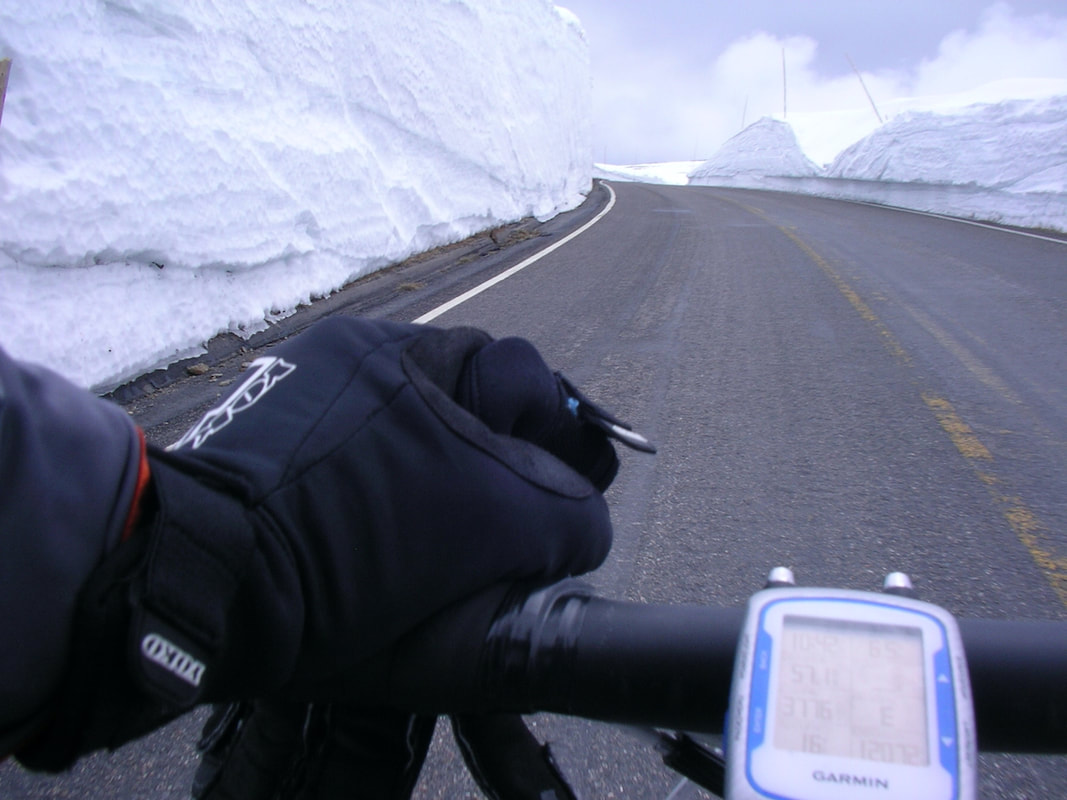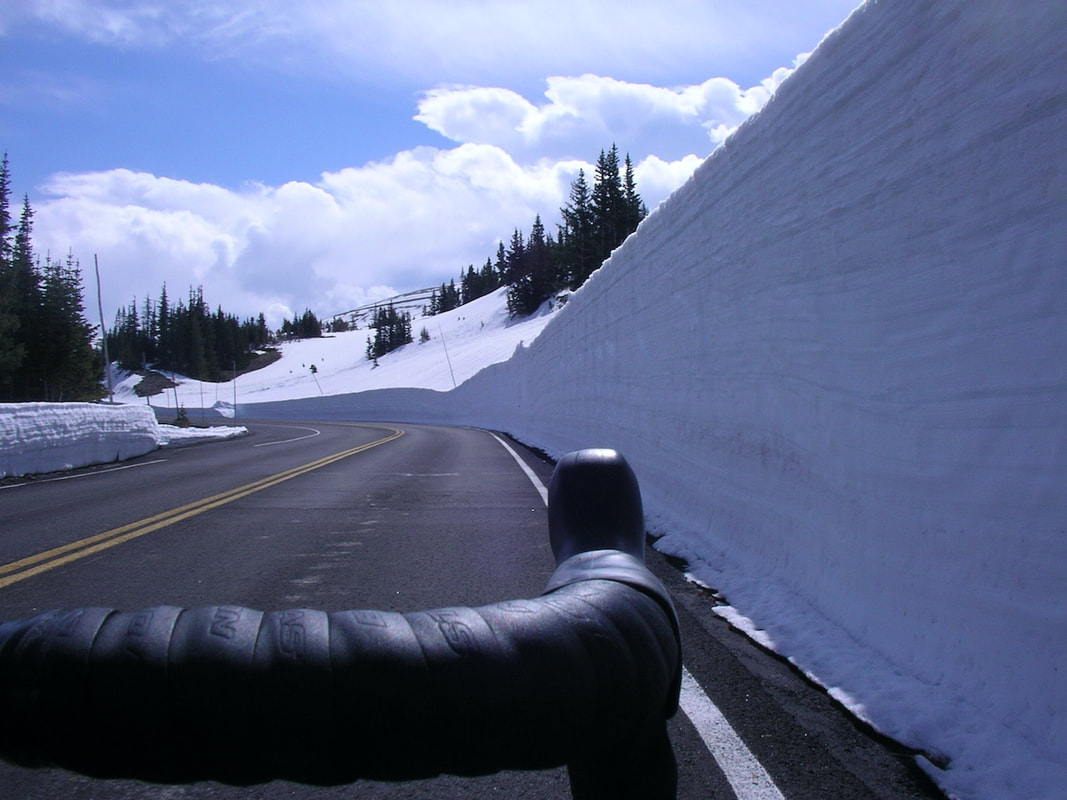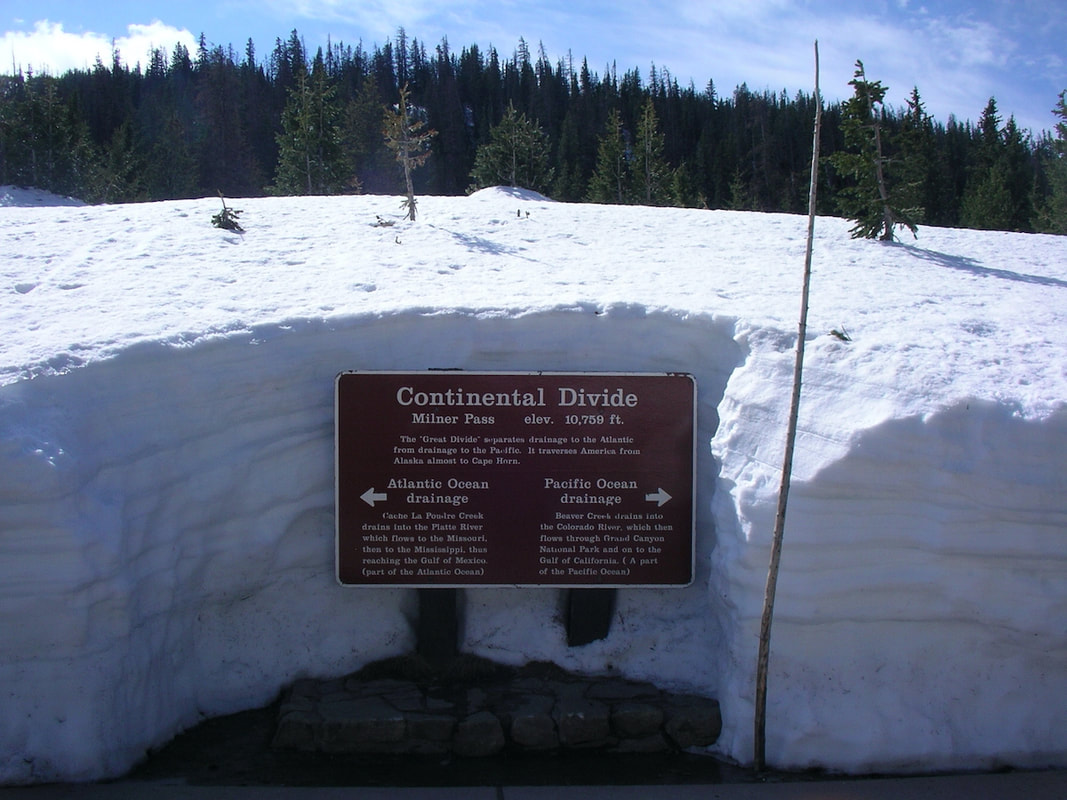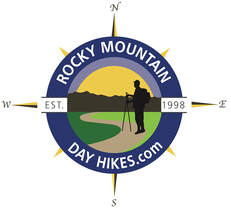|
Notes from the
Trail |
|
by Murray Selleck There is a small window of opportunity to bike Rocky Mountain National Park’s (RMNP) Trail Ridge Road with virtually no motor vehicles. This brief time frame is after the huge snowblowers have cut their way through the massive snowdrifts across the top but before the gates on the Estes Park and Grand Lake sides of the park have opened. There is a trick to accomplishing this ride and, of course, it’s called timing. Each year RMNP opens Trail Ridge Road to all comers around Memorial Day. Passenger cars, Sprinter vans, huge motor homes, trucks with tow-behind trailers, and all manner of vehicles will soon be driving up and over this beautiful road. Once the gates are open to motor vehicles riding a bike on Trail Ridge is a gamble at best. Distracted drivers, narrow lanes, minimal shoulders, not many guard rails, steep drop-offs, and if you happen to have the bad-luck timing of one car passing you with another car oncoming this three-way-squeeze is harrowing at best! Weather has everything to do with timing this ride. Ideally, the road is completely plowed all the way across from Grand Lake to Estes Park before starting up. This gives you more options as far as how much elevation to climb and how far across you may want to ride. So once the road is cleared the next thing to do is watch the weather reports. When your weather window of opportunity appears don’t delay. You may not get another chance. One year a late May snow storm rolled over RMNP dumping and drifting a couple feet of fresh snow across Trail Ridge Road. By the time the road crew had cleared the road a second time it was already past Memorial Day. The gates opened and I missed my (mostly) vehicle-free chance to ride. (Note: You may encounter a handful of official RMNP vehicles on the road as they prepare to open Trail Ridge). In years past when the stars aligned and I’ve ridden Trail Ridge the ride has always been a highlight of my biking season. I look forward to it every year. The best way to describe biking Trail Ridge Road is it’s always an adventure. Each time is different and offers an opportunity to experience the subtle nuances and dramatic power of RMNP. The one given is to be prepared for everything. Bring plenty of warm/breathable layers for the climb up. Pack windproof shells for the ride across and descent. Have plenty of water, some energy snacks, gloves, a thin thermal hat to fit under your bike helmet, front and rear safety lights, and tuck in a measure of endurance. You’ll need all of this gear and plenty of resolve, as well. From either side of the park you’re looking at a minimum of 4,000 feet of lung sucking climbing to get to the top. The higher you climb the colder it will become. As you leave treeline behind count on the wind to pick up. They will swirl and gust from all directions and try their best to blow you off your bike. I have experienced winds so strong I’ve been blown from one side of the road to the other. As morning turns to early afternoon watch for the clouds to build blocking any warm sunshine and perhaps containing snow and thunder and disappointment as you see your idyllic day turn potentially hazardous. Make a few mental notes of where running rivulets of water from melting snow are crossing the road. On your way back down what was once water may have returned to ice. Check your speed because road bike tires on black ice is a prime spot to send you sliding. I’ve ridden up there leaning my bike into stout crosswinds struggling to keep myself upright only to have the wind suddenly let up causing me to swerve into empty air and just as quickly crosswinds from the opposite side hit me accelerating that swerve to the edge of the road and a drop off. Unnerving to say the least! I’ve also ridden in cold sunshine with snowflakes flying and my fingers so numb I couldn’t feel my brake levers. And then there are the rides on Trail Ridge with endless blue skies and warm chinook breezes and horizon to horizon beauty that makes me want to ride Trail Ridge again and again. I’ve climbed up the numbered switchbacks, over Milner Pass and the Continental Divide, pedaled 180 degrees around Medicine Bow Curve while catching my breath and checking my motivation seeing all the climbing and elevation gain yet to come, paused for a weather check at the Gore Range Overlook, felt great at Tundra Curves and Iceberg Pass, free-wheeled through the impressive Rock Cuts, and then begin the turn around calculation. How much farther across should I ride before I have too much climbing to do to get back up?
Wish us all weather luck when biking Trail Ridge this year. If I see you up there wave as we pass pedaling at 12,000 feet elevation - practically motor vehicle free. That’s pretty darn close to heaven. Side Notes: Here is the link to RMNP’s website page on biking the park: https://www.nps.gov/romo/planyourvisit/biking.htm Also, Yellowstone National Park and Glacier National Park offer similar biking opportunities on their iconic roads. Make a road trip out of it and ride all three this spring. Yellowstone NP: https://www.nps.gov/yell/planyourvisit/bicycling.htm Glacier NP: https://www.nps.gov/glac/planyourvisit/bicycling.htm
0 Comments
Leave a Reply. |
"The wild requires that we learn the terrain, nod to all the plants and animals and birds, ford the streams and cross the ridges, and tell a good story when we get back home." ~ Gary Snyder
Categories
All
“Hiking -I don’t like either the word or the thing. People ought to saunter in the mountains - not hike! Do you know the origin of the word ‘saunter?’ It’s a beautiful word. Away back in the Middle Ages people used to go on pilgrimages to the Holy Land, and when people in the villages through which they passed asked where they were going, they would reply, A la sainte terre,’ ‘To the Holy Land.’ And so they became known as sainte-terre-ers or saunterers. Now these mountains are our Holy Land, and we ought to saunter through them reverently, not ‘hike’ through them.” ~ John Muir |
© Copyright 2025 Barefoot Publications, All Rights Reserved







